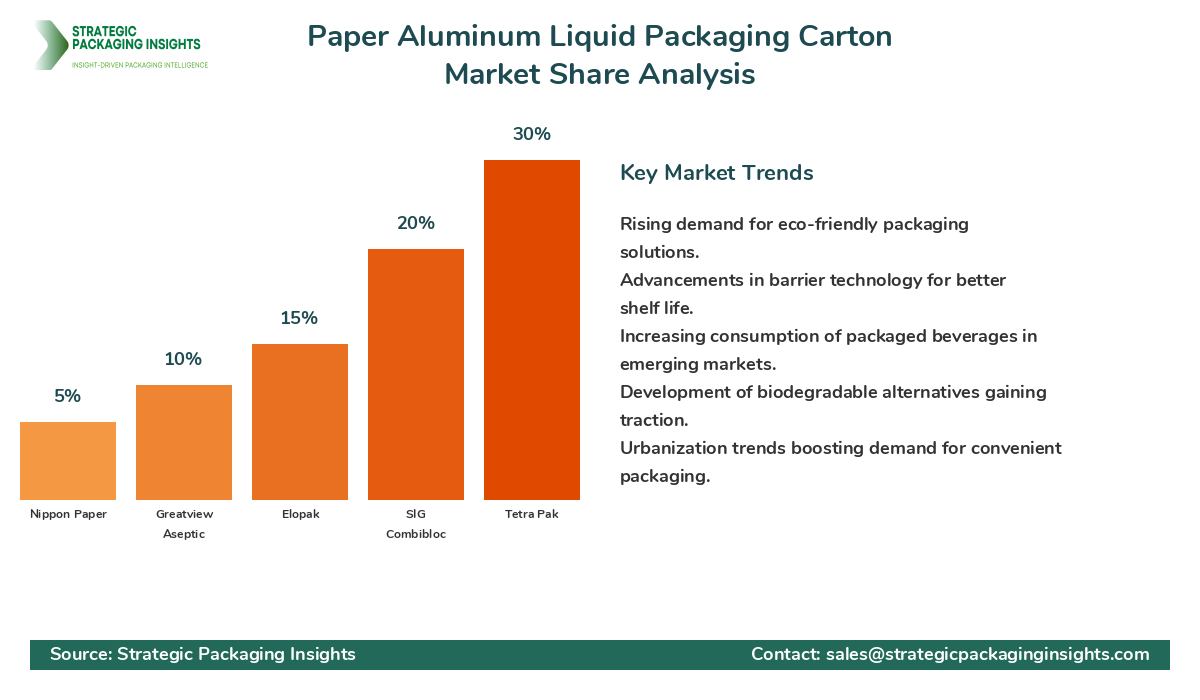- Home
- Beverage Packaging
- Paper Aluminum Liquid Packaging Carton Market Size, Future Growth and Forecast 2033
Paper Aluminum Liquid Packaging Carton Market Size, Future Growth and Forecast 2033
Paper Aluminum Liquid Packaging Carton Market Segments - by Material (Paperboard, Aluminum, Polyethylene), Application (Dairy Products, Juices, Water, Alcoholic Beverages, Others), End-User (Food & Beverage, Healthcare, Personal Care, Others), and Region (Asia Pacific, North America, Latin America, Europe, and Middle East & Africa) - Market Dynamics, Growth Opportunities, Strategic Drivers, and PESTLE Outlook (2025–2033)
Paper Aluminum Liquid Packaging Carton Market Outlook
The Paper Aluminum Liquid Packaging Carton market was valued at $12.5 billion in 2024 and is projected to reach $18.7 billion by 2033, growing at a CAGR of 4.5% during the forecast period 2025-2033. This market is driven by the increasing demand for sustainable and eco-friendly packaging solutions, as consumers and manufacturers alike are becoming more environmentally conscious. The versatility and recyclability of paper aluminum Liquid Packaging Cartons make them an attractive option for a wide range of applications, from dairy products to alcoholic beverages. Additionally, advancements in packaging technology have enhanced the barrier properties of these cartons, ensuring better preservation of liquid contents, which further fuels market growth.
However, the market faces challenges such as the high cost of raw materials and the complexity of recycling multi-layered packaging. Regulatory restrictions on the use of certain materials and the need for specialized recycling facilities can also hinder market expansion. Despite these challenges, the market holds significant growth potential due to the rising trend of urbanization and the increasing consumption of packaged beverages in emerging economies. Innovations in packaging design and the development of biodegradable alternatives are expected to create new opportunities for market players.
Report Scope
| Attributes | Details |
| Report Title | Paper Aluminum Liquid Packaging Carton Market Size, Future Growth and Forecast 2033 |
| Base Year | 2024 |
| Historic Data | 2017-2023 |
| Forecast Period | 2025-2033 |
| Number of Pages | 125 |
| Material | Paperboard, Aluminum, Polyethylene |
| Application | Dairy Products, Juices, Water, Alcoholic Beverages, Others |
| End-User | Food & Beverage, Healthcare, Personal Care, Others |
| Region | North America, Europe, Asia Pacific, Latin America, Middle East & Africa |
| Customization Available | Yes* |
Key Highlights Paper Aluminum Liquid Packaging Carton Market
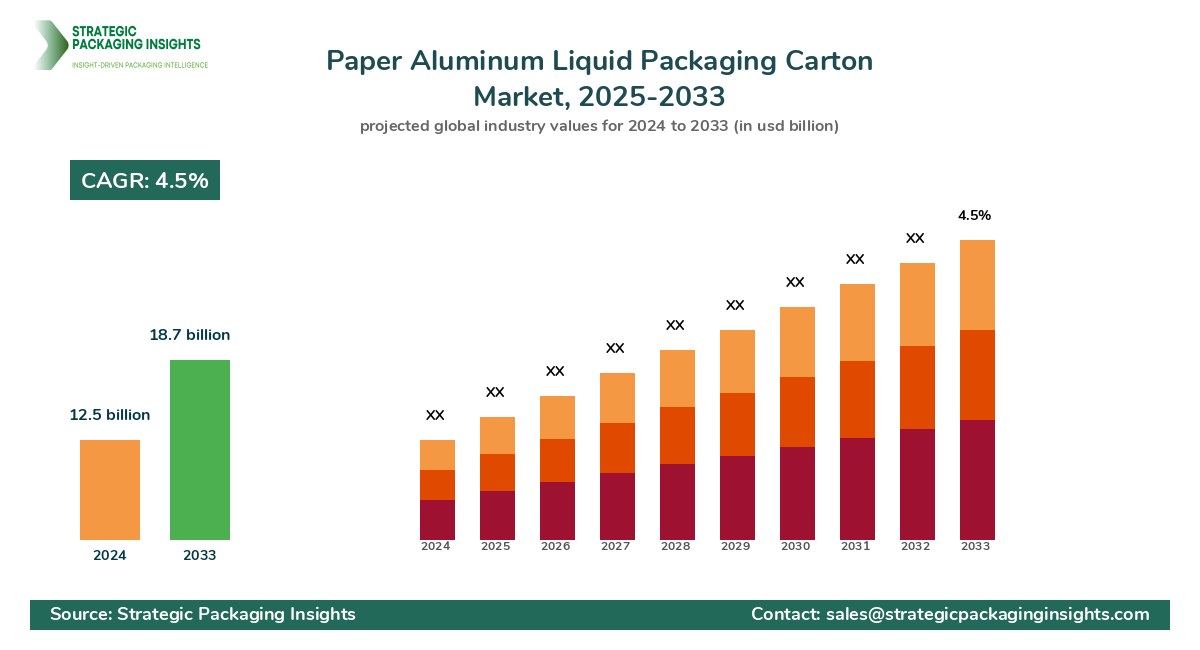
- Increasing demand for eco-friendly packaging solutions is driving market growth.
- Advancements in barrier technology enhance product shelf life.
- Rising consumption of packaged beverages in emerging markets.
- High cost of raw materials poses a challenge to market expansion.
- Regulatory restrictions on certain materials impact market dynamics.
- Innovations in packaging design offer new growth opportunities.
- Complexity of recycling multi-layered packaging remains a challenge.
- Development of biodegradable alternatives is gaining traction.
- Urbanization trends boost demand for convenient packaging solutions.
- Specialized recycling facilities are needed for sustainable growth.
Competitive Intelligence
The Paper Aluminum Liquid Packaging Carton market is highly competitive, with key players such as Tetra Pak International S.A., SIG Combibloc Group AG, Elopak AS, Greatview Aseptic Packaging Co., Ltd., and Nippon Paper Industries Co., Ltd. leading the charge. Tetra Pak holds a significant market share due to its extensive product portfolio and strong global presence. The company focuses on innovation and sustainability, offering a range of eco-friendly packaging solutions. SIG Combibloc is known for its advanced technology and customer-centric approach, which has helped it maintain a strong foothold in the market. Elopak's emphasis on renewable materials and sustainable practices has positioned it as a key player in the industry.
Greatview Aseptic Packaging has gained ground with its cost-effective solutions and strategic partnerships, while Nippon Paper Industries leverages its expertise in paper manufacturing to offer high-quality packaging products. Other notable players include Evergreen Packaging LLC, Mondi Group, Smurfit Kappa Group, and Stora Enso Oyj. These companies are investing in research and development to enhance their product offerings and expand their market reach. The competitive landscape is characterized by strategic collaborations, mergers, and acquisitions aimed at strengthening market positions and driving innovation.
Regional Market Intelligence of Paper Aluminum Liquid Packaging Carton
In North America, the Paper Aluminum Liquid Packaging Carton market is valued at $3.5 billion and is expected to grow steadily due to the increasing demand for Sustainable Packaging solutions and the presence of major market players. The region's focus on reducing plastic waste and promoting recycling initiatives further supports market growth. In Europe, the market is valued at $3.2 billion, driven by stringent environmental regulations and a strong emphasis on sustainability. The region's well-established recycling infrastructure and consumer awareness contribute to its robust market performance.
Asia-Pacific is the fastest-growing region, with a market value of $4.7 billion, fueled by rapid urbanization, rising disposable incomes, and increasing consumption of packaged beverages. The region's expanding middle class and growing awareness of environmental issues are key drivers of market growth. In Latin America, the market is valued at $1.1 billion, with growth supported by the increasing demand for convenient and eco-friendly packaging solutions. The Middle East & Africa region, valued at $0.9 billion, is experiencing moderate growth due to the rising adoption of sustainable packaging practices and the expansion of the food and beverage industry.
Top Countries Insights in Paper Aluminum Liquid Packaging Carton
In the United States, the Paper Aluminum Liquid Packaging Carton market is valued at $2.8 billion, with a CAGR of 3%. The country's focus on sustainability and recycling initiatives drives market growth. In China, the market is valued at $3.2 billion, with a CAGR of 6%, driven by rapid urbanization and increasing consumption of packaged beverages. Germany's market, valued at $1.5 billion, with a CAGR of 4%, benefits from stringent environmental regulations and a strong emphasis on sustainability.
In Brazil, the market is valued at $0.8 billion, with a CAGR of 5%, supported by the growing demand for convenient packaging solutions. In India, the market is valued at $1.2 billion, with a CAGR of 7%, driven by rising disposable incomes and increasing awareness of environmental issues. These countries are key players in the global market, with unique growth drivers and challenges that shape their market dynamics.
Paper Aluminum Liquid Packaging Carton Market Segments Insights
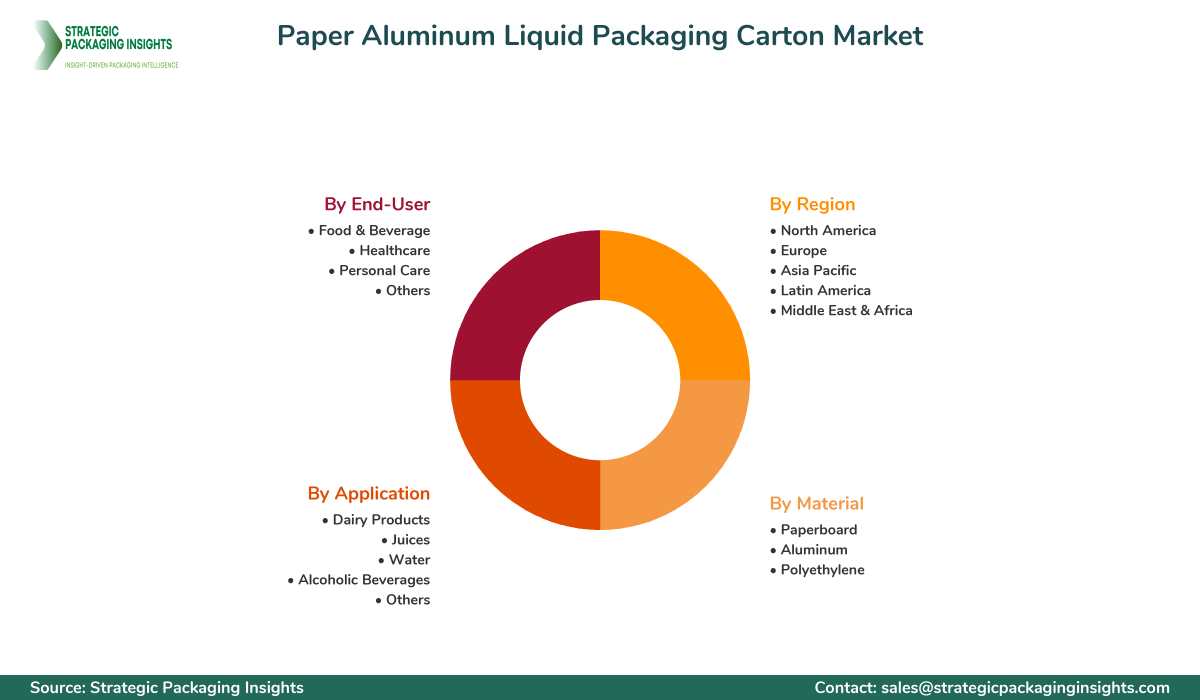
Material Analysis
The material segment of the Paper Aluminum Liquid Packaging Carton market is primarily divided into Paperboard, aluminum, and polyethylene. Paperboard is the most widely used material due to its recyclability and cost-effectiveness. It provides a sturdy structure for packaging and is favored for its environmental benefits. Aluminum, on the other hand, offers excellent barrier properties, protecting the contents from light, oxygen, and moisture. This makes it ideal for packaging sensitive liquids like juices and dairy products. Polyethylene is used as a coating material to enhance the durability and moisture resistance of the cartons.
The demand for paperboard is driven by the increasing focus on sustainable packaging solutions and the growing consumer preference for eco-friendly products. Aluminum's superior barrier properties make it a preferred choice for premium packaging solutions, despite its higher cost. Polyethylene's role as a protective layer is crucial in maintaining the integrity of the packaging, especially in humid environments. The competition among these materials is intense, with manufacturers continuously innovating to improve performance and reduce environmental impact.
Application Analysis
The application segment of the Paper Aluminum Liquid Packaging Carton market includes dairy products, juices, water, alcoholic beverages, and others. Dairy products represent a significant portion of the market due to the high demand for milk and other dairy beverages. The need for packaging that preserves freshness and extends shelf life is a key driver in this segment. Juices are another major application, with consumers seeking convenient and portable packaging options that maintain the quality and taste of the product.
The water segment is witnessing growth as consumers increasingly opt for packaged water over tap water, driven by health and safety concerns. Alcoholic beverages are also gaining traction, with manufacturers exploring innovative packaging designs to attract consumers. The demand for liquid packaging cartons in these applications is fueled by the need for lightweight, durable, and sustainable packaging solutions. Manufacturers are focusing on developing cartons that offer superior protection and convenience to meet the evolving needs of consumers.
End-User Analysis
The end-user segment of the Paper Aluminum Liquid Packaging Carton market is categorized into food & beverage, healthcare, personal care, and others. The food & beverage industry is the largest end-user, driven by the increasing consumption of packaged beverages and the demand for sustainable packaging solutions. The healthcare sector is also a significant contributor, with liquid packaging cartons used for packaging pharmaceutical liquids and nutritional supplements.
In the personal care industry, liquid packaging cartons are used for packaging products like shampoos and lotions, where the focus is on convenience and sustainability. The demand from these end-users is influenced by factors such as consumer preferences, regulatory requirements, and technological advancements. Companies are investing in research and development to create innovative packaging solutions that cater to the specific needs of each end-user segment.
Region Analysis
The regional analysis of the Paper Aluminum Liquid Packaging Carton market highlights the varying growth patterns and market dynamics across different regions. In North America, the market is driven by the increasing demand for sustainable packaging solutions and the presence of major market players. The region's focus on reducing plastic waste and promoting recycling initiatives further supports market growth. In Europe, the market is driven by stringent environmental regulations and a strong emphasis on sustainability. The region's well-established recycling infrastructure and consumer awareness contribute to its robust market performance.
Asia-Pacific is the fastest-growing region, fueled by rapid urbanization, rising disposable incomes, and increasing consumption of packaged beverages. The region's expanding middle class and growing awareness of environmental issues are key drivers of market growth. In Latin America, the market is supported by the increasing demand for convenient and eco-friendly packaging solutions. The Middle East & Africa region is experiencing moderate growth due to the rising adoption of sustainable packaging practices and the expansion of the food and beverage industry.
The market share distribution in the Paper Aluminum Liquid Packaging Carton market is dominated by a few key players, with Tetra Pak International S.A. leading the pack due to its extensive product portfolio and strong global presence. The company's focus on innovation and sustainability has helped it maintain a significant market share. SIG Combibloc Group AG and Elopak AS are also major players, known for their advanced technology and customer-centric approach. These companies are gaining market share by investing in research and development and expanding their product offerings.
Greatview Aseptic Packaging Co., Ltd. and Nippon Paper Industries Co., Ltd. are also key players, leveraging their expertise and strategic partnerships to strengthen their market positions. The competitive landscape is characterized by strategic collaborations, mergers, and acquisitions aimed at enhancing market share and driving innovation. The market share distribution affects pricing, innovation, and partnerships, with companies striving to differentiate themselves through unique product offerings and sustainable practices.
Paper Aluminum Liquid Packaging Carton Market Segments
The Paper Aluminum Liquid Packaging Carton market has been segmented on the basis of
Material
- Paperboard
- Aluminum
- Polyethylene
Application
- Dairy Products
- Juices
- Water
- Alcoholic Beverages
- Others
End-User
- Food & Beverage
- Healthcare
- Personal Care
- Others
Region
- North America
- Europe
- Asia Pacific
- Latin America
- Middle East & Africa
Primary Interview Insights
What are the key drivers of growth in the Paper Aluminum Liquid Packaging Carton market?
What challenges does the market face?
How are companies addressing sustainability in this market?
Which regions are experiencing the fastest growth?
What innovations are shaping the future of this market?
Latest Reports

The Hot Melt Glue Labeler market was valued at $1.2 billion in 2024 and is projected to reach $2.3 billion by 2033, growing at a CAGR of 6.5% during the forecast period 2025–2033.

The Ethical Label market was valued at $1.5 billion in 2024 and is projected to reach $3.2 billion by 2033, growing at a CAGR of 8.5% during the forecast period 2025–2033.

The Packaging Tensioner market was valued at $1.2 billion in 2024 and is projected to reach $2.3 billion by 2033, growing at a CAGR of 6.5% during the forecast period 2025–2033.
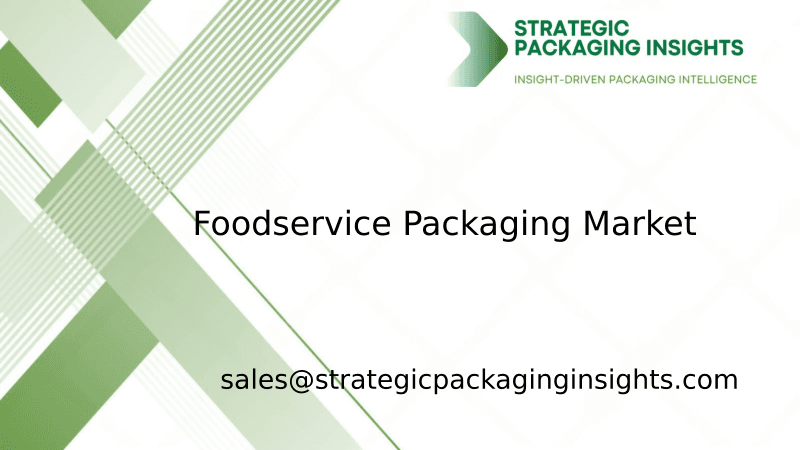
The foodservice packaging market was valued at $120 billion in 2024 and is projected to reach $180 billion by 2033, growing at a CAGR of 4.5% during the forecast period 2025–2033.

The nano-enabled packaging market was valued at $15.2 billion in 2024 and is projected to reach $35.6 billion by 2033, growing at a CAGR of 9.5% during the forecast period 2025–2033.
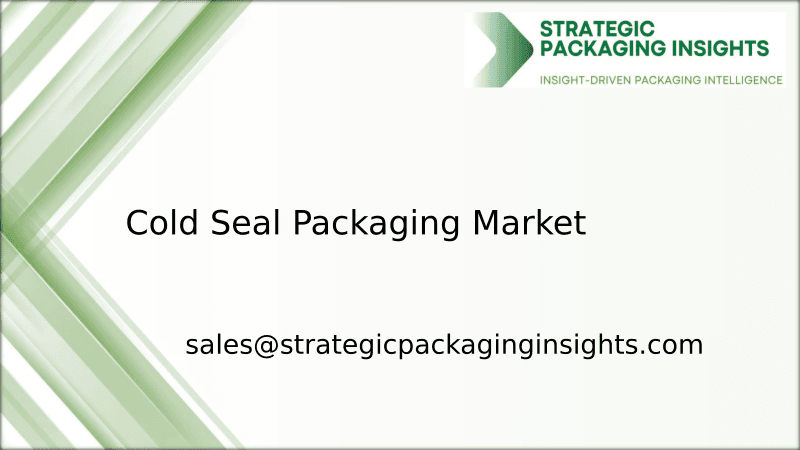
The Cold Seal Packaging market was valued at $1.5 billion in 2024 and is projected to reach $2.3 billion by 2033, growing at a CAGR of 4.8% during the forecast period 2025–2033.

The Transparent Barrier Packaging Films market was valued at $12.5 billion in 2024 and is projected to reach $20.3 billion by 2033, growing at a CAGR of 5.8% during the forecast period 2025–2033.
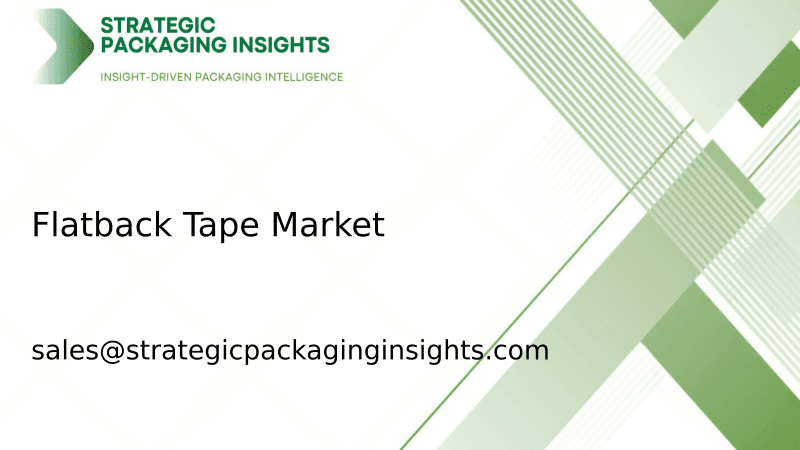
The Flatback Tape market was valued at $2.5 billion in 2024 and is projected to reach $4.1 billion by 2033, growing at a CAGR of 5.8% during the forecast period 2025–2033.
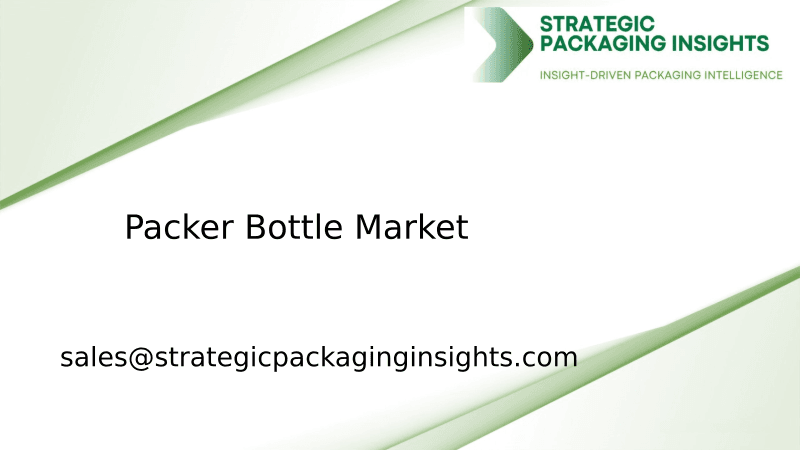
The packer bottle market was valued at $3.5 billion in 2024 and is projected to reach $5.8 billion by 2033, growing at a CAGR of 5.2% during the forecast period 2025–2033.
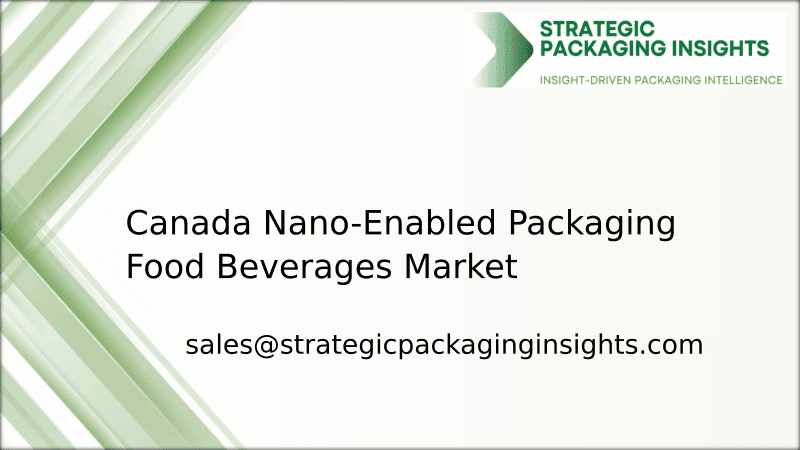
The Canada Nano-Enabled Packaging Food Beverages market was valued at $1.2 billion in 2024 and is projected to reach $3.5 billion by 2033, growing at a CAGR of 12.5% during the forecast period 2025–2033.
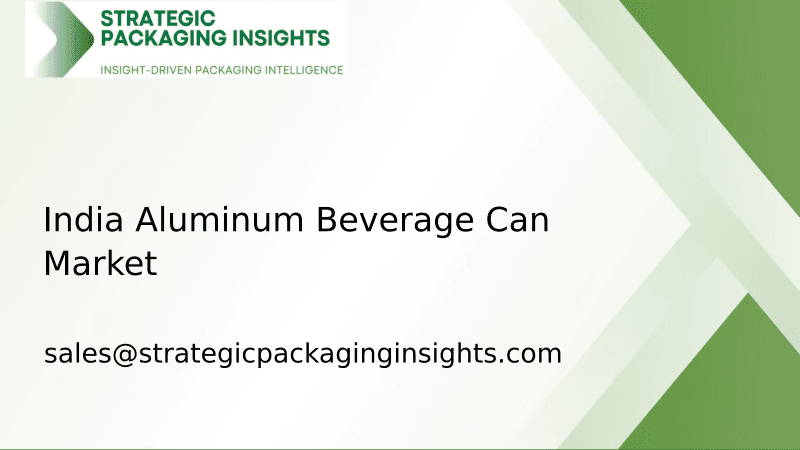
The India Aluminum Beverage Can market was valued at $1.2 billion in 2024 and is projected to reach $2.5 billion by 2033, growing at a CAGR of 8.5% during the forecast period 2025–2033.
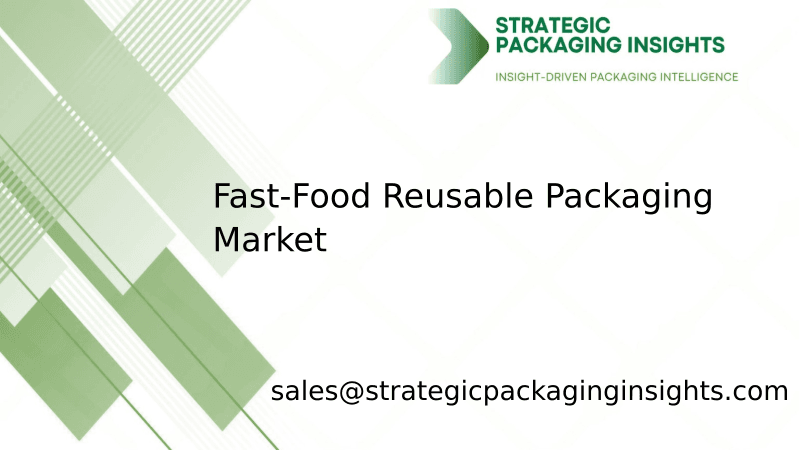
The fast-food reusable packaging market was valued at $1.2 billion in 2024 and is projected to reach $3.5 billion by 2033, growing at a CAGR of 12.5% during the forecast period 2025–2033.
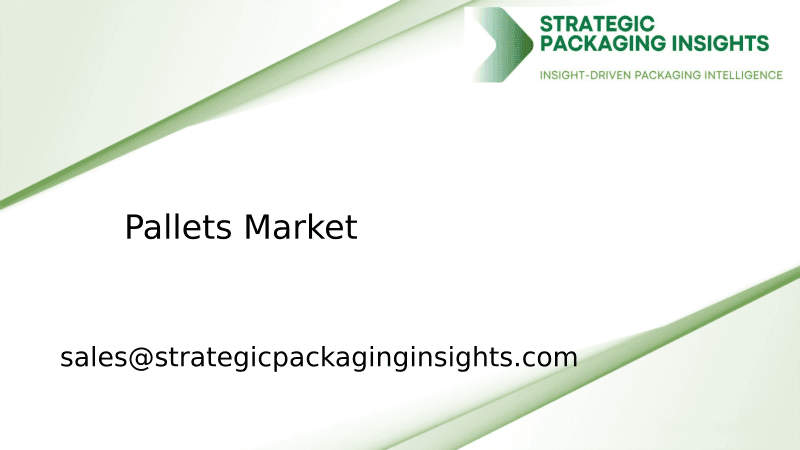
The pallets market was valued at $59.91 billion in 2024 and is projected to reach $88.69 billion by 2033, growing at a CAGR of 4.5% during the forecast period 2025–2033.

The lamination adhesives market was valued at $2.5 billion in 2024 and is projected to reach $4.1 billion by 2033, growing at a CAGR of 5.8% during the forecast period 2025–2033.

The garment packing machine market was valued at $1.2 billion in 2024 and is projected to reach $2.5 billion by 2033, growing at a CAGR of 8.5% during the forecast period 2025–2033.
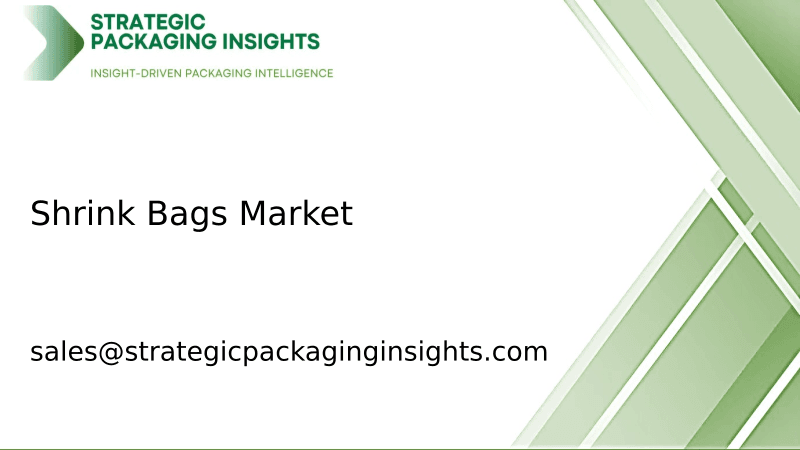
The shrink bags market was valued at $3.5 billion in 2024 and is projected to reach $5.8 billion by 2033, growing at a CAGR of 5.2% during the forecast period 2025–2033.
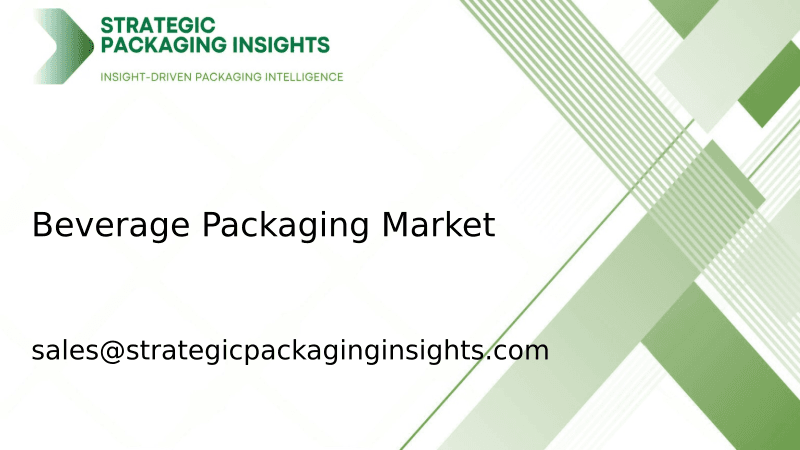
The beverage packaging market was valued at $128 billion in 2024 and is projected to reach $186 billion by 2033, growing at a CAGR of 4.2% during the forecast period 2025–2033.
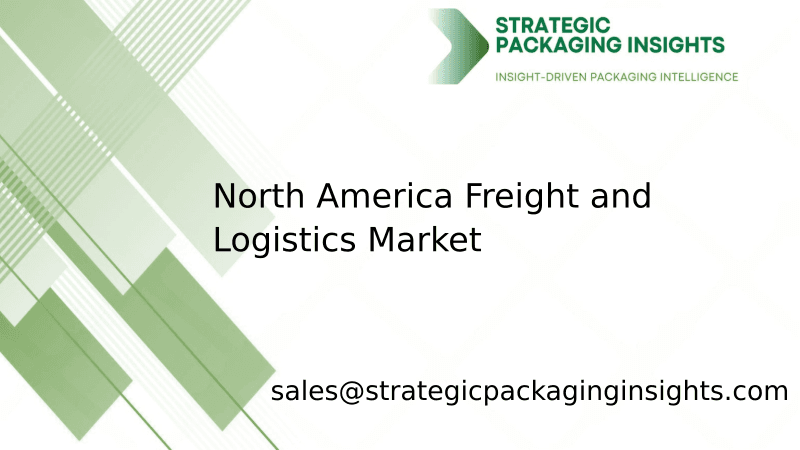
The North America Freight and Logistics market was valued at $1,200 billion in 2024 and is projected to reach $1,800 billion by 2033, growing at a CAGR of 4.5% during the forecast period 2025–2033.

The Anti-Counterfeiting Packaging market was valued at $105 billion in 2024 and is projected to reach $182 billion by 2033, growing at a CAGR of 6.5% during the forecast period 2025–2033.

The Active and Modified Atmospheric Packaging market was valued at $15.2 billion in 2024 and is projected to reach $25.8 billion by 2033, growing at a CAGR of 6.5% during the forecast period 2025–2033.

The molded fiber packaging market was valued at $7.5 billion in 2024 and is projected to reach $12.3 billion by 2033, growing at a CAGR of 5.8% during the forecast period 2025–2033.

The micro packaging market was valued at $1.2 billion in 2024 and is projected to reach $2.5 billion by 2033, growing at a CAGR of 8.5% during the forecast period 2025–2033.

The Anti-counterfeit Pharmaceuticals Packaging market was valued at $80 billion in 2024 and is projected to reach $150 billion by 2033, growing at a CAGR of 7.5% during the forecast period 2025–2033.
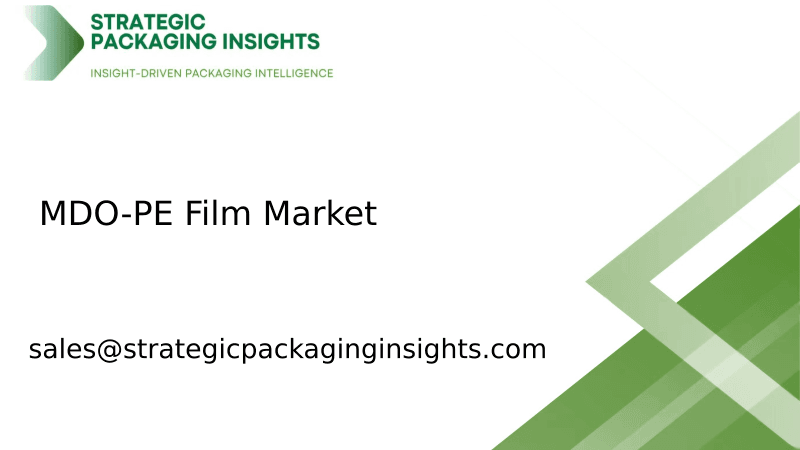
The MDO-PE Film market was valued at $3.5 billion in 2024 and is projected to reach $5.8 billion by 2033, growing at a CAGR of 5.2% during the forecast period 2025–2033.
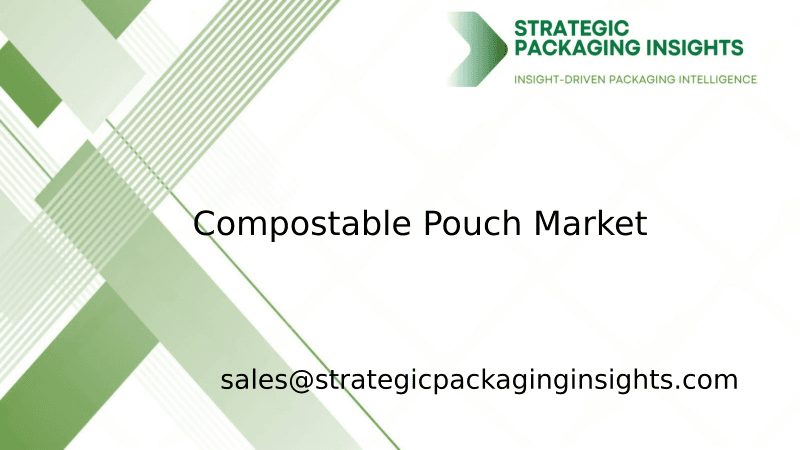
The compostable pouch market was valued at $1.2 billion in 2024 and is projected to reach $3.5 billion by 2033, growing at a CAGR of 12.5% during the forecast period 2025–2033.

The Hot Melt Glue Labeler market was valued at $1.2 billion in 2024 and is projected to reach $2.3 billion by 2033, growing at a CAGR of 6.5% during the forecast period 2025–2033.

The Ethical Label market was valued at $1.5 billion in 2024 and is projected to reach $3.2 billion by 2033, growing at a CAGR of 8.5% during the forecast period 2025–2033.

The Packaging Tensioner market was valued at $1.2 billion in 2024 and is projected to reach $2.3 billion by 2033, growing at a CAGR of 6.5% during the forecast period 2025–2033.

The foodservice packaging market was valued at $120 billion in 2024 and is projected to reach $180 billion by 2033, growing at a CAGR of 4.5% during the forecast period 2025–2033.

The nano-enabled packaging market was valued at $15.2 billion in 2024 and is projected to reach $35.6 billion by 2033, growing at a CAGR of 9.5% during the forecast period 2025–2033.

The Cold Seal Packaging market was valued at $1.5 billion in 2024 and is projected to reach $2.3 billion by 2033, growing at a CAGR of 4.8% during the forecast period 2025–2033.

The Transparent Barrier Packaging Films market was valued at $12.5 billion in 2024 and is projected to reach $20.3 billion by 2033, growing at a CAGR of 5.8% during the forecast period 2025–2033.

The Flatback Tape market was valued at $2.5 billion in 2024 and is projected to reach $4.1 billion by 2033, growing at a CAGR of 5.8% during the forecast period 2025–2033.

The packer bottle market was valued at $3.5 billion in 2024 and is projected to reach $5.8 billion by 2033, growing at a CAGR of 5.2% during the forecast period 2025–2033.

The Canada Nano-Enabled Packaging Food Beverages market was valued at $1.2 billion in 2024 and is projected to reach $3.5 billion by 2033, growing at a CAGR of 12.5% during the forecast period 2025–2033.

The India Aluminum Beverage Can market was valued at $1.2 billion in 2024 and is projected to reach $2.5 billion by 2033, growing at a CAGR of 8.5% during the forecast period 2025–2033.

The fast-food reusable packaging market was valued at $1.2 billion in 2024 and is projected to reach $3.5 billion by 2033, growing at a CAGR of 12.5% during the forecast period 2025–2033.

The pallets market was valued at $59.91 billion in 2024 and is projected to reach $88.69 billion by 2033, growing at a CAGR of 4.5% during the forecast period 2025–2033.

The lamination adhesives market was valued at $2.5 billion in 2024 and is projected to reach $4.1 billion by 2033, growing at a CAGR of 5.8% during the forecast period 2025–2033.

The garment packing machine market was valued at $1.2 billion in 2024 and is projected to reach $2.5 billion by 2033, growing at a CAGR of 8.5% during the forecast period 2025–2033.

The shrink bags market was valued at $3.5 billion in 2024 and is projected to reach $5.8 billion by 2033, growing at a CAGR of 5.2% during the forecast period 2025–2033.

The beverage packaging market was valued at $128 billion in 2024 and is projected to reach $186 billion by 2033, growing at a CAGR of 4.2% during the forecast period 2025–2033.

The North America Freight and Logistics market was valued at $1,200 billion in 2024 and is projected to reach $1,800 billion by 2033, growing at a CAGR of 4.5% during the forecast period 2025–2033.

The Anti-Counterfeiting Packaging market was valued at $105 billion in 2024 and is projected to reach $182 billion by 2033, growing at a CAGR of 6.5% during the forecast period 2025–2033.

The Active and Modified Atmospheric Packaging market was valued at $15.2 billion in 2024 and is projected to reach $25.8 billion by 2033, growing at a CAGR of 6.5% during the forecast period 2025–2033.

The molded fiber packaging market was valued at $7.5 billion in 2024 and is projected to reach $12.3 billion by 2033, growing at a CAGR of 5.8% during the forecast period 2025–2033.

The micro packaging market was valued at $1.2 billion in 2024 and is projected to reach $2.5 billion by 2033, growing at a CAGR of 8.5% during the forecast period 2025–2033.

The Anti-counterfeit Pharmaceuticals Packaging market was valued at $80 billion in 2024 and is projected to reach $150 billion by 2033, growing at a CAGR of 7.5% during the forecast period 2025–2033.

The MDO-PE Film market was valued at $3.5 billion in 2024 and is projected to reach $5.8 billion by 2033, growing at a CAGR of 5.2% during the forecast period 2025–2033.

The compostable pouch market was valued at $1.2 billion in 2024 and is projected to reach $3.5 billion by 2033, growing at a CAGR of 12.5% during the forecast period 2025–2033.
